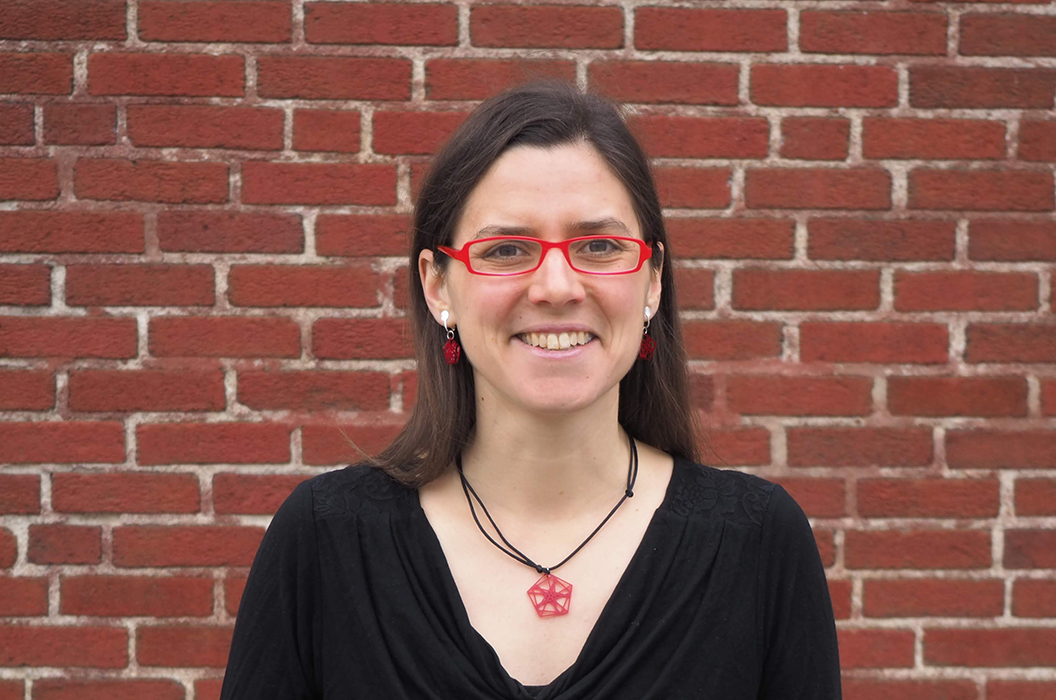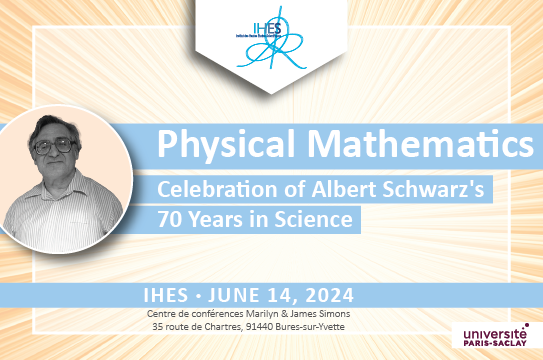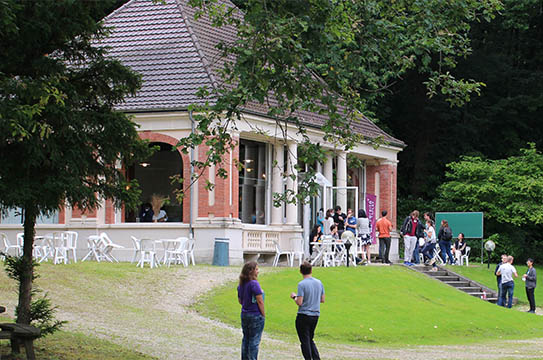 Scientific activity
Scientific activity
Diana Davis shares her reflections on life at the Institute during lockdown
Diana Davis completed her Ph.D. at Brown University in 2013 under the direction of Richard Schwartz. She was a postdoc at Northwestern University for three years, and she is currently a visiting assistant professor at Swarthmore College, just outside of Philadelphia. This is her second visit to IHES; she frequently visits France, and this area in particular, to work with Samuel Lelièvre at Paris-Saclay, and other local mathematicians in the billiards and flat surfaces community.
While a graduate student, she won an international award for the video she created [1] to explain her PhD thesis result using colors and dance, which “went viral” in the mathematical community. Diana Davis has published over a dozen papers, mostly on aspects of mathematical billiards and dynamical systems, and has given over 100 talks in 22 states and 9 countries. She is also an educational innovator, creating and teaching problem-centered, discussion-based math courses of all levels, and studying their pedagogical effectiveness. Outside of research and teaching, she enjoys long-distance running, recreational sailing, traveling, and thinking about how to build community and create a sustainable world.
I feel extraordinarily fortunate to be visiting the IHES at this time. It is an idyllic setting at the best of times, and it is a delightful place to be even during this pandemic.
I came to the IHES in early March from the United States, originally planning to visit only for the week of my spring vacation. Shortly after I arrived, my institution decided to hold classes online for the remainder of the semester, meaning that I did not need to return. The IHES then generously allowed me to extend my visit for the duration of my Schengen visa. This decision was perhaps made easier by the fact that France’s border was closed and the IHES was not accepting any more visitors, so no one would need the office or the studio that I was using.
During my first week here, while everything was still mostly normal, I worked each day with my long-time collaborator Samuel Lelièvre from Paris-Saclay, gave a talk at Jussieu, and talked with other members of the Institute at lunch and at the daily tea. At the end of that week, France went on lockdown (confinement) and subsequently the IHES was closed until further notice.
Immediately thereafter, our lives became restricted to the Ormaille Residence and video conferencing. I continued working with Samuel, for a couple of hours each evening on Skype. I taught my classes on Zoom for a couple of hours a day, three days a week, in the afternoons (during the morning on the U.S. east coast), and I held Zoom office hours and attended Zoom meetings with colleagues in my department.
Every weekday, I have been hosting a daily tea, to replace the IHES tea that is no longer occurring. For about a month, this took place on Zoom, with three or four of us showing up each day on the screen, with our own teacup and snack. Sometimes others joined us from outside the Ormaille — Fanny Kassel, for example. Now that the weather is beautiful, we have been having the tea outdoors, sitting 4 meters apart in a large square or pentagon in the grassy area at the Ormaille.
Life is different during the confinement, but it is still quite wonderful. Here in Bures-sur-Yvette, we have everything we need: two grocery stores (Auchan and La Fourmi Verte) within easy walking distance, nice places to walk within a 1-km radius from our home, and several large grassy areas within the Ormaille Residence. The farmer’s markets are closed, so now the farmers are doing delivery, and several of us have combined to order a weekly box of vegetables from Potagez-moi. We gather outside, with the box on a picnic table and us spaced out in a large circle around it, and we spend an enjoyable hour chatting and dividing the bounty.
The weather has been sunny and warm, so I have been able to keep my big windows open, and a warm breeze flows through my apartment all day. I have been doing a lot of running, and there are two great places to run within our 1-km radius: the Orsay campus of Université Paris-Saclay, and the trails in the forest just north of the university. In early April, the ground was covered in small purple flowers. In the middle of April, the flowering trees bloomed, and purple lilacs and wisteria lined the streets of Bures-sur-Yvette. Now in late April, the bushes are blooming, and the paths of the university are lined with white flowers on both sides.
Being able to work in the afternoons, due to the 6-hour time difference with the U.S. east coast, is fantastic. It allows me to wake up naturally, go for a run, have some breakfast, do some work, and then start teaching at 3:30pm, which is far easier than getting to the classroom by 9:30am.
Because everything is remote, I was able to give a joint talk with my colleague Samuel, on our joint research. We have never given a talk together, because we are rarely in the same place, but under these circumstances we were both able to show up in the Zoom meeting and give different parts of the talk. I gave an introduction and described our methods and results, and then Samuel did a live demo of our software.
This confinement has been an interesting social experiment. Over the years, people have speculated that “in the future, we will all stay in our houses and just interact with people online,” but this period has shown that such a life is really not desirable. People also say, “young people these days prefer talking with their friends over apps and texting, instead of spending time with them in person,” but I can say for sure that my nieces and nephews would give just about anything to be able to see their friends in real life.
On the other hand, many times I have traveled great distances to give a talk, or shown up at a meeting with my colleagues even though it was inconvenient for me to attend. Now I am able to do these from my living room, with no burning of fossil fuels, no travel costs, no hotel costs, and no commuting time. I hope that we will continue to be able to do these things in the future — that more talks will be recorded, that people will be able to Skype or Zoom into a conference or meeting, and that this will be seen as a reasonable choice.
I am very grateful to the IHES for welcoming me during this period, and for the friendships that I have made with Katie, Aaron, Alex, Ariyan, Ami and Arthur here at the Ormaille during this strange and wonderful time.
[1] Cutting Sequences on the Double Pentagon, explained through dance



